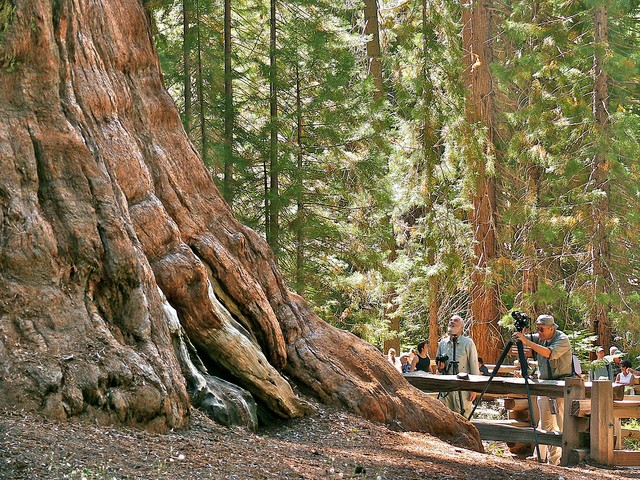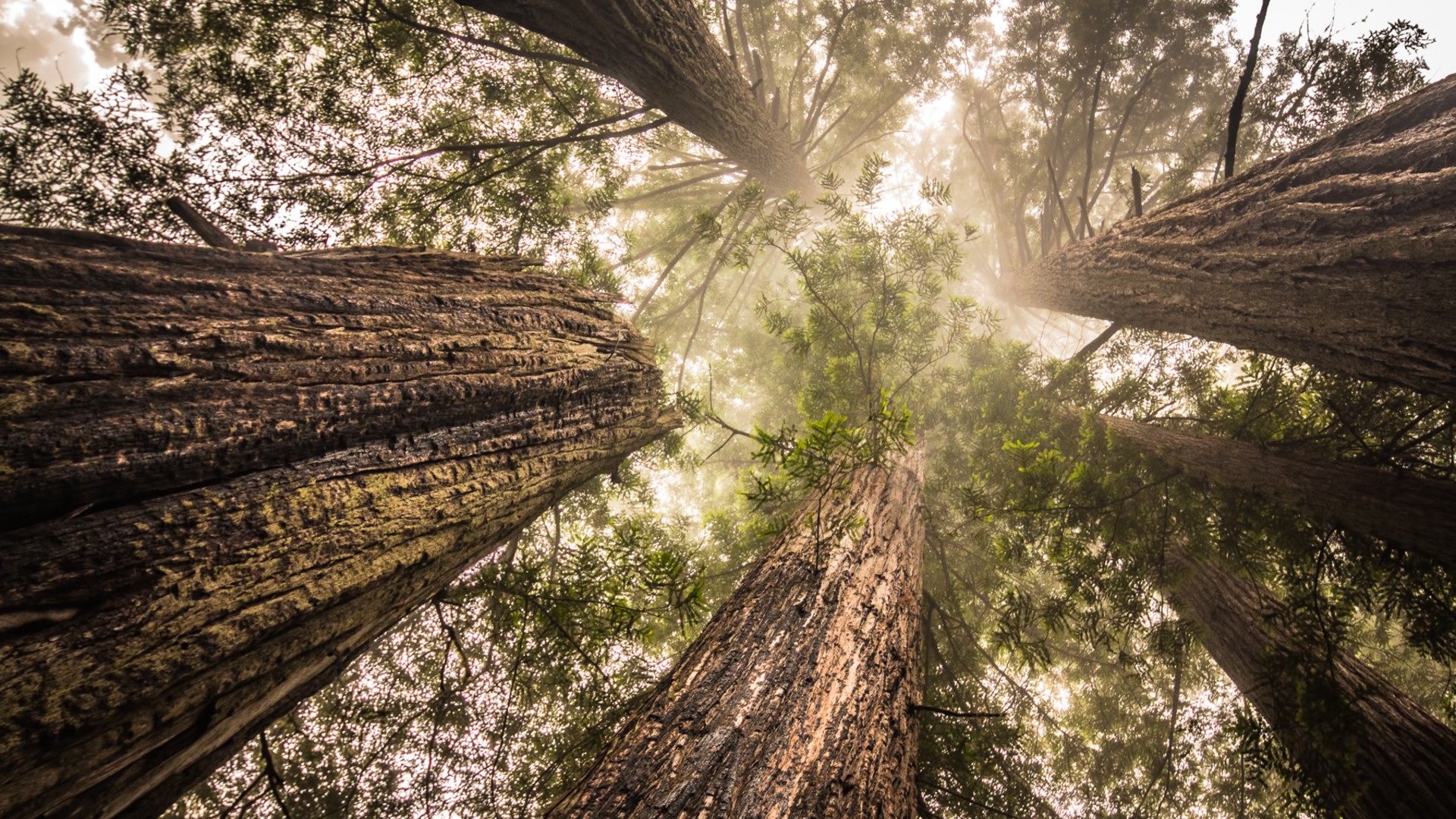California’s most iconic trees can live for centuries — but can they survive in a warming world?
Populations of the state’s two redwood species — coast redwoods (Sequoia sempervirens) and giant sequoias (Sequoiadendron giganteum) — have already declined by 95 percent since 1850 due to logging and development. Now scientists want to know how climate change and drought will affect them in the near future.
Many of California’s other tree species are already known to be at risk. The record-breaking drought that plagued the state from 2011-2016 killed an estimated 129 million trees, mostly in the state’s mixed-conifer forests that include trees like white fir, Douglas fir, ponderosa pine, sugar pine and California black oak. The drought left entire swaths of the Sierra Nevada streaked with the sight of reddish-brown dying or dead trees.
California redwoods didn’t display as much obvious damage, but that doesn’t mean they weren’t impacted. Figuring out how and why they would be affected by future droughts and warming temperatures — and how they’ll resist the changes — remains an important line of questioning, not just for the trees themselves but for everything around them. The famous trees make for great tourist attractions, and also serve important ecosystem functions. They capture more carbon dioxide than any other tree and provide habitat for hundreds of bird species and everything from black bears and elk, to mountain lions and beavers.
“Old-growth forests are important to society for many reasons, but their worth cannot be measured,” says Emily Francis, a fifth-year PhD student in the department of Environmental Earth System Science at Stanford University who’s studying how redwoods are responding to drought and climate change. “It is humbling to consider the depth of their history and resilience as living organisms.”
We talked to Francis about her research and what the future may hold for these beloved trees.
What have you learned about how climate change is affecting redwoods?
Climate change has resulted in warming temperatures in California, which has increased the severity of droughts. Redwoods are adapted to environments with high water availability, so increasingly severe droughts threaten redwoods.
On the other hand, redwoods are also experts at utilizing water from fog or coastal low clouds. Fog supplies water through condensation on leaf surfaces and fog drip, which in some locations, can exceed water input from winter rainfall in a normal precipitation year.
However, access to fog water is variable depending on where trees are located — at high elevations, or at locations where fog is blocked by a mountain, fog moisture is largely absent. We expect redwoods without access to fog water to be more sensitive to climate change.

How did redwoods fare during California’s recent five-year drought?
Coastal redwood forests suffered less mortality than the mixed-conifer forests in the Sierra Nevada mountains, most likely because fog cover in redwood forests both moderated the exceptionally high temperatures and supplied moisture to redwood forests during the driest and hottest summer months.
But it’s likely that their growth rates and carbon uptake were still severely impacted. We’re currently measuring growth rates from tree rings dating back to the 1950s to study the effect of recent droughts on tree growth rates and to quantify the buffering effect of streams and fog on redwood responsiveness to drought.
Are there any differences between how climate change or drought is affecting the two tree species?
The natural climate conditions of coastal redwood and giant sequoia habitats are very different. Giant sequoias are endemic to the Sierra Nevada mountains, which is a much drier climate with no access to water from fog during the summer. Because of this, redwoods and giant sequoias have variable responses to drought, but both respond by reducing the volume of leaves in their canopy, which seems to be a very effective strategy. Both species suffered relatively low mortality rates during the recent drought.
For giant sequoia in particular, few individuals died during the recent drought, and many of those that did were trees that had suffered damage during recent fires. The low mortality rates of giant sequoias were in stark contrast to other adjacent tree species — in particular sugar pine and ponderosa pine — which suffered high mortality.

What do we still need to learn about how climate change may affect redwoods?
We still need better predictions of the impact of climate change on fog patterns in California to understand how redwoods are responding to climate change.
Current projections of climate change’s impact on fog are contradictory. Is it increasing or decreasing? On the one hand, long-term airport records of fog cover suggest that it declined over the second half of the 1900s relative to the first half. On the other hand, some predictions suggest that warming temperatures in the Central Valley of California could increase the coastal-to-inland temperature gradient, thereby resulting in more fog cover.
Finally, the formation of fog cover is dependent on a cold coastal upwelling zone off of the coast of California, which is also vulnerable to climate change.
What does the long-term picture look like for the health of California’s redwoods?
While temperatures continue to rise in California, drought stress in redwood forests is likely to increase. In response, the natural habitat of redwoods may be reduced.
Over large geographic scales we expect the natural habitat of redwoods to move northward, and over small scales within forests, we expect redwood habitats to become more confined to sites that have high access to water from streams and fog. Because of this, it’s important to identify and protect these redwood stands — especially those that are close to streams and in high-fog environments.
![]()


